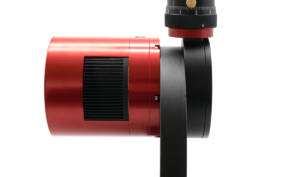
[ASI6200 Guide] 5 connection methods to get 55mm back focus length
How to connect ASI6200MM Pro to 2″ EFW/M54 filter drawer and OAG-L? How many solutions are there for ASI6200MM Pro to get 55mm back focus length? If you are still
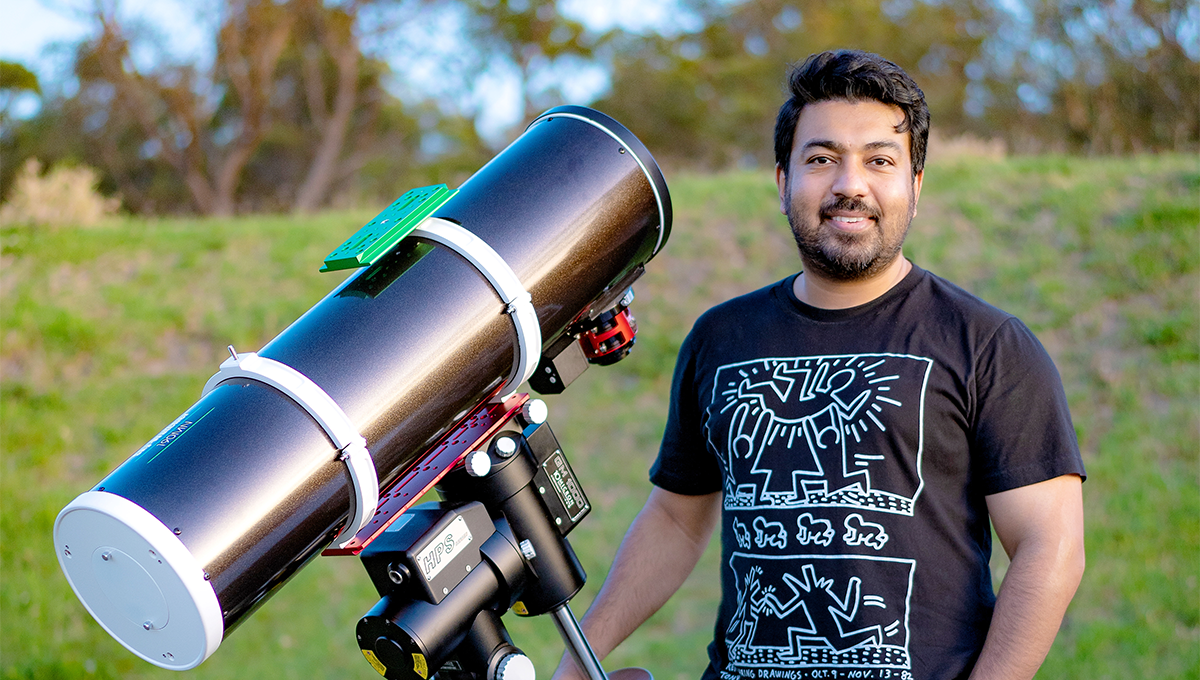
Hello Prasun, thanks for accepting our interview invitation. Congratulations for winning ASIWEEK competition in week #10/2023!
Hello team, and everyone reading! My name is Prasun Agrawal, and I am a passionate astrophotographer based out of Sydney, Australia. I am a consultant by profession and an avid astronomy lover by choice. I have a beautiful 5-year-old daughter who means everything to me and keeps me going in tough times (or when it gets cloudy after I have set up for the night)!

I am an extremely curious person by nature, and question everything. While I was always very curious about space and the night sky, around 10 years back, when the Higgs Boson was discovered, that’s when I got seriously interested in astrophysics and astronomy in general. The news was covered extensively and it was also when we were starting to have more access to global news through the internet. Since then, I have immersed myself in various fields of Astronomy, from learning more about the Big Bang to understanding general and special relativity, and quantum field theory. I was always interested in astrophotography, looking at the beautiful images of nebulae. Until 2017, I did not have access to clear skies and so could never explore them myself. From 2018 onwards, as I had access to clear skies more often, I jumped into Astrophotography as a proper hobby.

At the moment, I have 3 scopes – the Askar 400, the Edge HD 9.25”, and the Skywatcher 190 Mak-Newt. I have 2 mounts – the AM5 and the 10 Micron GM1000HPS, and I use the ZWO ASI 2600MM Pro as my main imaging camera. The guiding setup is through a ZWO OAG-L and the ZWO 174MM Mini. I also have the ASIAIR Pro, which I use mainly with the AM5 and the Askar 400. I would like to say this is in sharp contrast to the gear that I started with – a stock Nikon DSLR, a star tracker, a Meade 350mm refractor, and the ASIAIR Pro. This hobby is a money pit!

The air quality is generally great in Sydney, although the light pollution is quite extensive (Bortle 7, where I live). I sometimes set up on my balcony, which has a clear and wide view of the south. I am part of the Northern Sydney Astronomical Society (NSAS), and the club has an observing site about 20 km from my place, which is Bortle 5. I regularly image from there, whenever the weather allows. Additionally, Australia has an accredited dark sky park about 6hrs from Sydney, which I visit 2-3 times a year, mainly for broadband imaging. I have recently also started exploring a Bortle 2 location that is the observing site for the Astronomical Society of New South Wales, which is about 3hrs from Sydney. I don’t have an observatory yet, but that is definitely a dream!

It was a very interesting story – three of us from NSAS made an impromptu trip to the Bortle 2 location, as it was forecast to be a clear night. It was the first night with my new mount and scope and so I wasn’t expecting a full set of images. We got lucky with great seeing and still weather, which allowed me to get enough data on a night to be able to create this beautiful image. I used the 190 Mak-Newt on the 10 Micron, to capture this. 600s subs, at 0 gain on the 2600mm Pro, with the 3nm Chroma Oiii and the 3.5nm Antlia Ha were used.

I use different software. First, I use Astro Pixel Processor for calibration and integration. I find its interface and results very satisfactory. Then, the majority of my workflow is in Pixinsight. After I have the 95% version of my final image, I put some finishing touches in Photoshop.
Processing is definitely one of the most difficult parts – the other I would say is managing aberrations in the image train, as your focal length increases (back-spacing, tilt, flexure, etc.). Great processing can make average data look really beautiful. I have realized that it is often the limiting factor in getting good images, rather than the hardware.

Over time, I have automated most of my imaging sequence, using ASIAIR Pro and NINA. So now I can relax comfortably in the car or my room if I’m imaging from the balcony 🙂 When I am at a club night, or with friends, it is not difficult to stay awake, with the company and conversation.

One of the biggest changes is that I want summer to end quickly now, so we get long winter nights! Jokes apart, I think I have realized that it is easier to get images of deep sky objects that please others, but very difficult to get images that please me. Even with a much-improved image train, better mount, and much better processing, I keep questioning my process and critically looking at my work on how to get that extra 1%. The desire for perfection is definitely something that the hobby encourages.

One of my biggest achievements was to receive an APOD (Astronomy Picture of the Day), for my image of the planets’ conjunction over the Sydney Opera House, back in April. It is an astrophotographer’s dream to be featured in APOD, and I was very grateful to have had that opportunity. The next one would be winning the ASIWEEK for the Dolphin Nebula, which I think is one of my best images so far. Other than these, I personally feel I have been able to improve my processing skills to get better images from the data that I have.

I clearly see Astrophotography becoming more budget-friendly, especially with equipment for all levels of maturity. ZWO is doing a great job introducing cameras, and now a mount, to bring new enthusiasts to the hobby. I think the next big jump that ZWO may think about is Adaptive Optics, and how to integrate it into the ZWO ecosystem.

My Astro gear is all red! I have the 2600MM Pro with the EFW, the EAF, and the OAG-L, the 174MM Mini, the 29MM Mini, ASIAIR Pro, and most recently, the ZWO AM5. My first ASI camera was the 183MC Pro.

I really love how responsive your team is to customer feedback on various social media platforms. Keep up the good work!
In terms of products, I strongly feel you have a great positioning in the market to introduce a separate line of more premium products for advanced imagers, which could include a robotic focuser, a rotator, adaptive optics-based guide systems, optional encoders for the AM5, something like an ASIAIR ultra, that has higher capacity power management (up to 12v 10a).

I aim to image more often if the weather improves. I also want to start planning for my remote observatory – something that I have been thinking about for a long time. And hopefully, get another ZWO camera setup, so I can run two imaging rigs side by side.

How to connect ASI6200MM Pro to 2″ EFW/M54 filter drawer and OAG-L? How many solutions are there for ASI6200MM Pro to get 55mm back focus length? If you are still
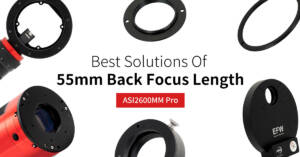
People are asking the connect methods of ASI2600MM Pro: How to use it with the new 36mm EFW? How to reach the 55mm back focus distance? What accessories I need
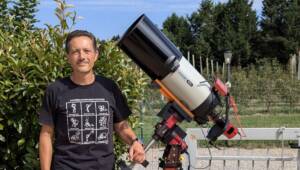
Hello Andrea Arbizzi,thanks for accepting our interview invitation. Congratulations on winning the ASIWEEK competition in week#42/2024! Q1: At first, congratulation that your nice image won #ASIWEEK. Can you introduce yourself
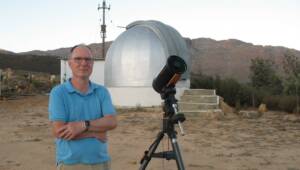
Hello Peter Dunsby,thanks for accepting our interview invitation. Congratulations on winning the ASIWEEK competition in week#46/2024! Q1: At first, congratulation that your nice image won #ASIWEEK. Can you introduce yourself
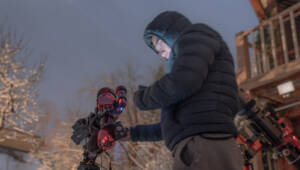
Hello Juzelle Jardin,thanks for accepting our interview invitation. Congratulations on winning the ASIWEEK competition in week#45/2024! Q1: At first, congratulation that your nice image won #ASIWEEK. Can you introduce yourself